8. True Romance (1993, Tony Scott)
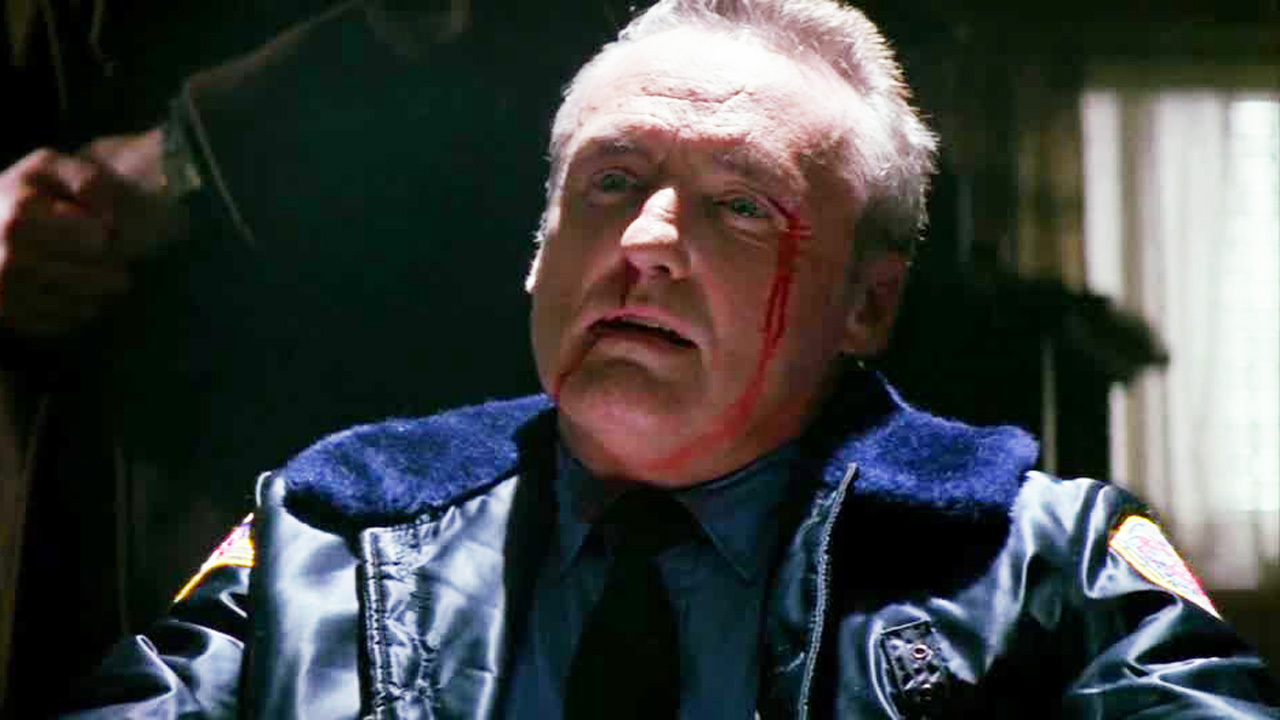
Centred on another man who defies the mob, “True Romance” is an interesting piece, first taking place in Detroit where after marrying a call girl (Patricia Arquette), a man named Clarence Worley (Christian Slater) steals drugs from her pimp and plans to sell them in Hollywood. However, the drugs didn’t belong to the pimp but to the Mob, who then starts pursuing this man in order to recover their merchandise.
Another film considered a classic, “True Romance” was directed by Tony Scott (“Top Gun”, “Days of Thunder”); however, the film’s real author, whose stamp is on every line of every scene, is Quentin Tarantino. As in “Reservoir Dogs”, his 1992 directorial debut, Tarantino creates a world of tough guys, bravado, lurid melodrama, easy women, betrayal, guns, and drugs.
In his world, “low cut” is to “neckline” as “fast” is to “car.” The movie hurtles from scene to scene, aiming for a climax which will strike “Reservoir Dogs” fans as curiously familiar. In both films, the plot ingeniously arrives at a moment where all of the warring parties are in the same room at the same time, simultaneously shooting at each other.
7. The Usual Suspects (1995, Bryan Singer)
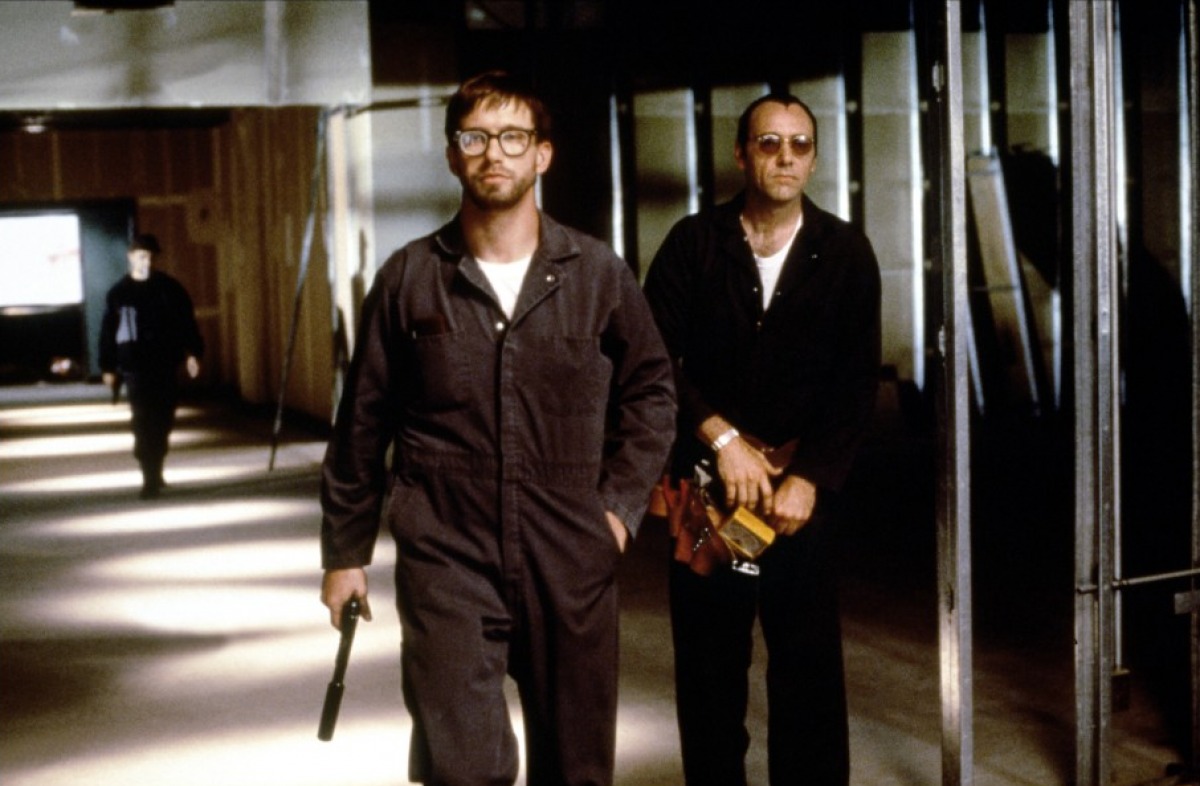
“After that, my guess is that you will never hear from him again. The greatest trick the devil ever pulled was convincing the world he did not exist. And like that…he is gone.” And these are the very words Mr. Verbal Kint uses perhaps to describe his feat, perhaps even himself. Verbal Kint (Kevin Spacey) is the voice of guidance in “The Usual Suspects”, a film that recounts via flashbacks, as Verbal is being interrogated by a police officer, with the events that lead to a violent shooting between criminals on a boat in the San Pedro Bay.
This film is actually an interesting case to study because due to its ‘unusual storytelling’ – not only does it have a final twist, but throughout the film we are constantly moving back and forth between past and present – many people who have watched it praised it for its brilliant script and final twist: “The film’s coup de grace is as elegant as it is unexpected. The whole movie plays back in your mind in perfect clarity—and turns out to be a completely different movie to the one you’ve been watching (rather better, in fact)”.
However, there were and are still those who watched this film and felt puzzled and lost. “The story builds up to a blinding revelation, which shifts the nature of all that has gone before, and the surprise filled me not with delight but with the feeling that the writer, Christopher McQuarrie, and the director, Bryan Singer, would have been better off unravelling their carefully-knit sleeve of fiction and just telling us a story about their characters – those that are real, in any event. I prefer to be amazed by motivation, not manipulation.”
Despite what your appreciation of “The Usual Suspects” is, truth be told, whether you liked it or not, once the film ends, you still spend a great deal of time thinking about it and trying to connect the puzzle. And that is not such a common thing – it means that it was entertaining and for the most part accomplished its mission.
6. Abel Ferrara: King of New York (1990) and Bad Lieutenant (1992)
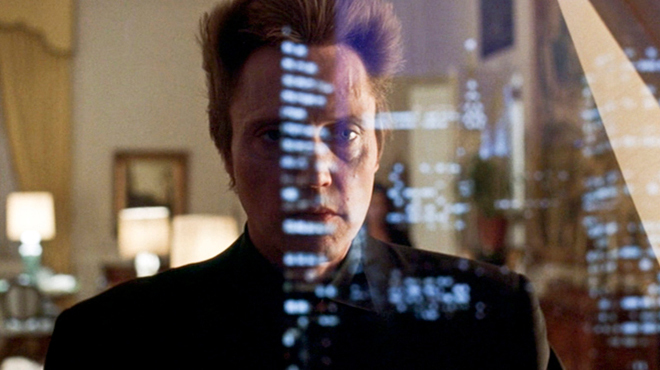
The premise of Abel Ferrara’s “King of New York” is a modern adaptation of Robin Hood’s tale. It follows ‘drug king’ Frank White (Christopher Walken), a man who upon being released from prison shocks his associates with a decision: he wants to be mayor and better yet, he wants to use the operation’s profits to help build a hospital for the poor.
This is a character-driven film and casts more importance on the behaviour and the themes associated with the character’s interiority than with the plot itself. And because this choice was made, following the otherwise unrealistic aspirations of a man for most part taciturn and mysterious, much of the film’s interest relays on its background. Not the city as in Marty Scorsese’s film, but the film’s visual style, shot in great part at night, on gloomy prison-like locations.
Different from its predecessor in terms of plot, “Bad Lieutenant” is nevertheless close to “King of New York” in terms of themes and visual style. “Bad Lieutenant” is also focused on a character who hopes to achieve some kind of redemption, only this time, the man is not a drug lord; he is a police lieutenant whose vices – gambling and drugs – make him corrupt.
However, he comes across a new case, the rape of a nun, who knows who raped her but will not give names because she forgives them. This position casts a great impression on the lieutenant who upon analysing his degraded life and decides to change his ways.
Much could be written about the film, however, in the end the only one thing that matters is this: if the most interesting aspect in “King of New York” is the visuals and the background, then in the “Bad Lieutenant” it’s the forefront – Harvey Keitel’s solid performance.
5. Miller’s Crossing (1990, Joel Coen)
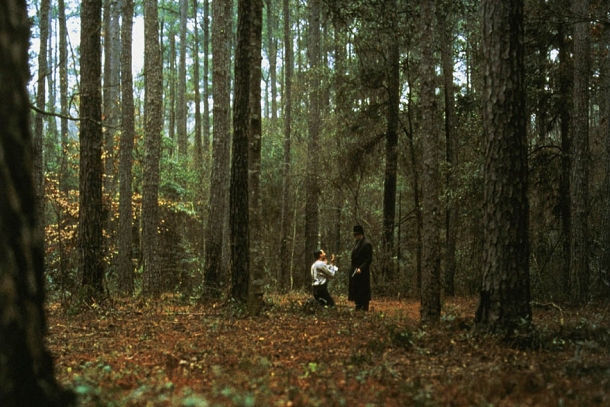
One of the Coen brothers’ best visual achievements, “Miller’s Crossing” (1990) is set during the Prohibition era and revolves around a man named Tom Regan (Gabriel Byrne), who happens to be the right arm of a political boss and local Irish mob leader. However, once a war between the Italian and Irish mafia becomes imminent, Regan gets divided between loyalties owed to both parties.
The film “comes from two traditions that sometimes overlap, the gangster movie of the 1930s and the film noir of the 1940s. It finds its characters in the first and its visual style in the second. (…) The pleasures of the film are largely technical. It is likely to be most appreciated by movie lovers who will enjoy its resonance with films of the past.”
4. Carlito’s Way (1993, Brian De Palma)
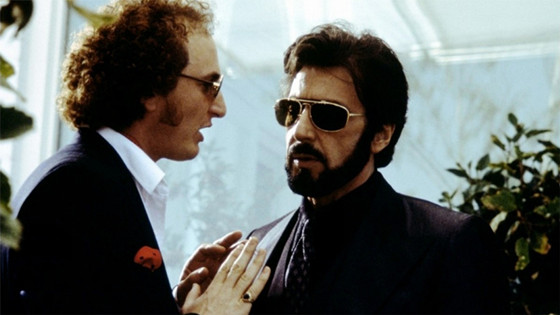
Another classic: “Carlito’s Way”. This film tells the story of a convict recently released by the name of Carlito Brigante (Al Pacino). As with many other stories, Carlito vows to leave the criminal life, but nevertheless, his cousin Guajiro (John Ortiz) convinces him to come along with him to seal a drug deal in a local bar.
However, this rapidly goes wrong once Guarijo is betrayed and murdered. Amidst all the shooting, the experienced Carlito manages to find a way out but before that, he takes the money that belonged to Guajiro, planning his retirement with it. Despite his initial success, not all will work out for Carlito…
One of the best known and successful films made by Brian De Palma, “Carlito’s Way” has several interesting aspects to highlight. However, despite the film’s visual richness, it’s the use of interior dialogue that stands out at first. This had been previously used in many other crime films such as “Goodfellas”. However, the narration provides this film with a new dimension – Carlito tells us about his dreams, his mistakes, and the solutions he finds for them, and this contributes to a proximity with the character.
This is important because Carlito’s story is not an unusual and original one; it has been told quite a number of times, especially in gangster films, so naturally, it’s fair to conclude that much of the films power comes from it. From it and from Al Pacino, logically.
3. Quentin Tarantino: Reservoir Dogs (1992) and Pulp Fiction (1994)
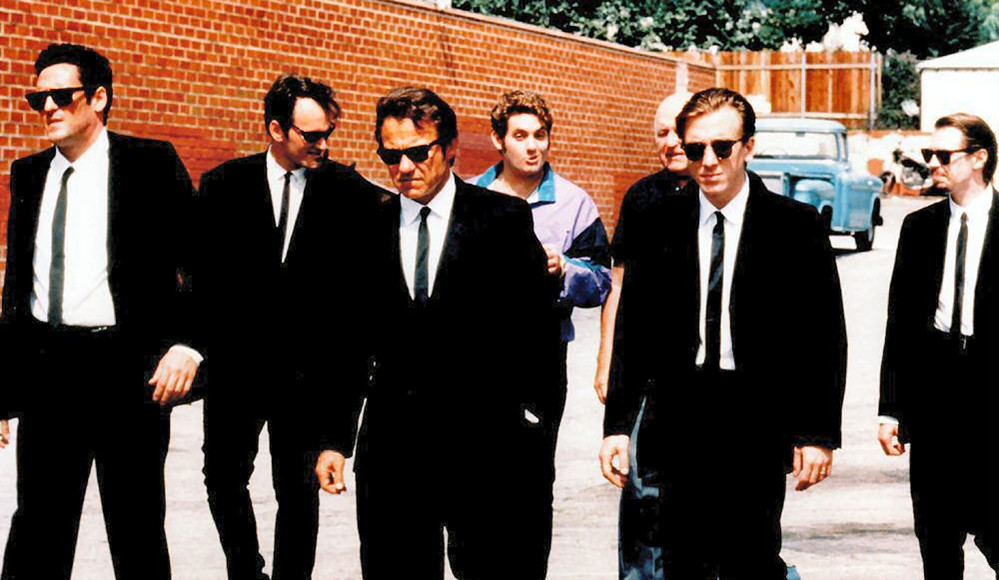
Quentin Tarantino became a well-known name during the 1990s, particularly with the release of critically acclaimed “Pulp Fiction”. However, even before then, Tarantino made quite interesting projects such as “Reservoir Dogs”.
“Reservoir Dogs” has since become a cult film, made independently; it accompanies a group of jewellery thieves in the planning, execution, and aftermath of a heist. Things go terribly wrong with the planned robbery and so, the criminals start suspecting that there is a police informant among them. Which, logically, leads to tragic and violent consequences.
Now, Tarantino, since the 90s, has become a filmmaker that people either love or hate. Despite this, people should keep in mind that whatever their stance is regarding his works, at the very least they should take an impartial look at them, and appreciate the details and technical aspects of his films.
This is what I do and that allows me to understand that the greatest aspect of “Reservoir Dogs” is the cast. Of course, the film has also other interesting aspects such as dialogue and tracking shots. However, what holds the film together is precisely the cast led by Lawrence Tierney (if you’re curious, he did great work in the classics “Born To Kill” and “Dillinger”), joined by Steve Buscemi, Michael Madsen, Harvey Keitel, Tim Roth and Chris Penn.
Moving on: “Pulp Fiction”. Starting out in a diner, a couple (Tim Roth and Amanda Plummer), sharing a meal together, decides to rob the place. The film then moves to the stories of different people that are tied to a local gangster named Marsellus Wallace (Ving Rhames) and whose paths will meet at some point.
First, the film follows two hitmen – Vincent (John Travolta) and Butch (Samuel L. Jackson) – who work for Wallace. Second, the film is centred on a small-time boxer named Butch (Bruce Willis) who, after double crossing Wallace, plans on escaping with his girlfriend Fabienne (Maria de Medeiros). Featured in a third subplot is Wallace’s prize-wife, Mia (Uma Thurman).
As before, an impartial look at the film will reveal that the greatest aspect about it is the script, not only the dialogue but also the structure. “There’s a special kick that comes from watching something this thrillingly alive…” And it’s precisely Tarantino’s ability to control what is told and the way it is told that justifies this quote, which was written by one critic at the time of the film’s release.
2. Heat (1995, Michael Mann)
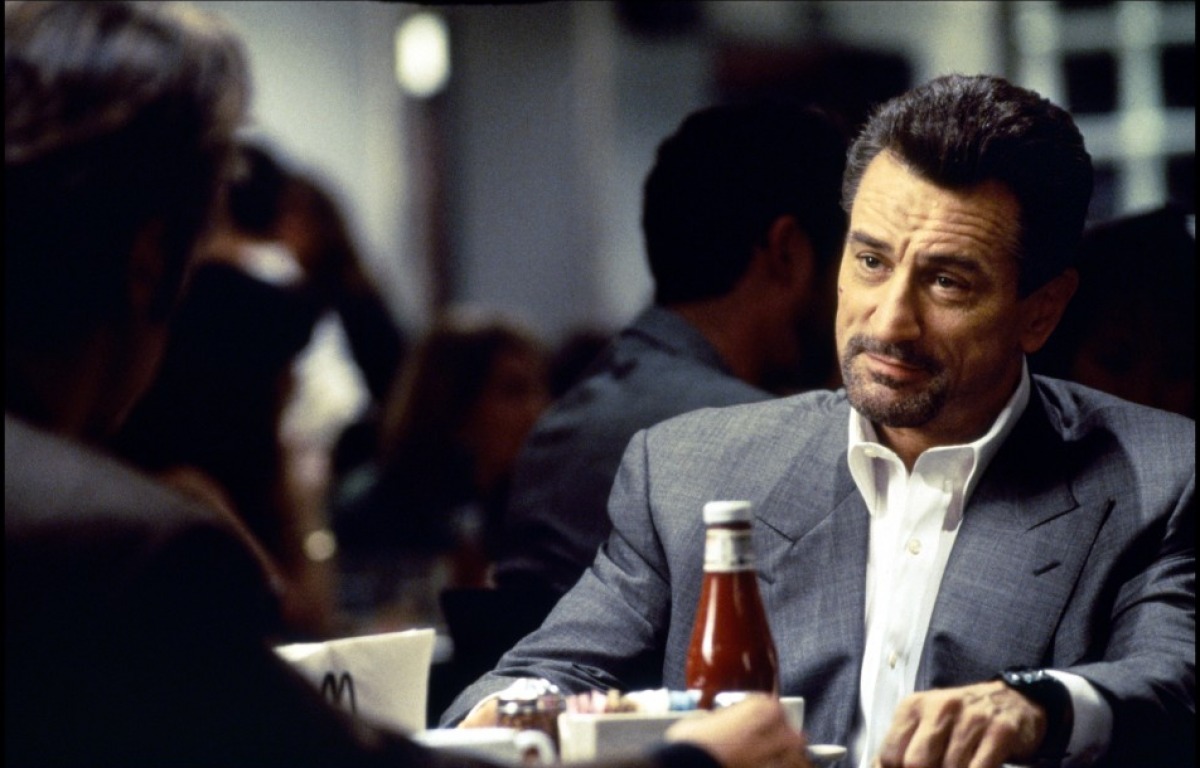
Whatever the description may be, this film is all about the scene at the dining table, the confrontation. Whatever people say, the scene at the dining table where a police detective confronts his prey and career criminal who he knows has pulled a heist but is yet unable to prove it… it’s all about the scene at the dining table where two great actors, symbols of a generation, show their talent. Al Pacino as the police detective named Vincent Hannah. Robert DeNiro as a veteran thief named Neil McCauley.
“Heat” (1995), aside from the scene in the dining table, tells the story of a Los Angeles police detective who follows the trail of a group of bank robbers, who in their last theft committed a mistake that made the police suspicious of their identity and evolvement, therefore placing the heat on themselves.
(Vincent Hanna) “My life’s a disaster zone. I got a stepdaughter so fucked up because her real father’s this large-type asshole. I got a wife, we’re passing each other on the down-slope of a marriage – my third – because I spend all my time chasing guys like you around the block. That’s my life.”
(Neil McCauley) “A guy told me one time, ‘Don’t let yourself get attached to anything you are not willing to walk out on in 30 seconds flat if you feel the heat around the corner.’ Now, if you’re on me and you gotta move when I move, how do you expect to keep a… a marriage?”
1. Martin Scorsese: Goodfellas (1990) and Casino (1995)
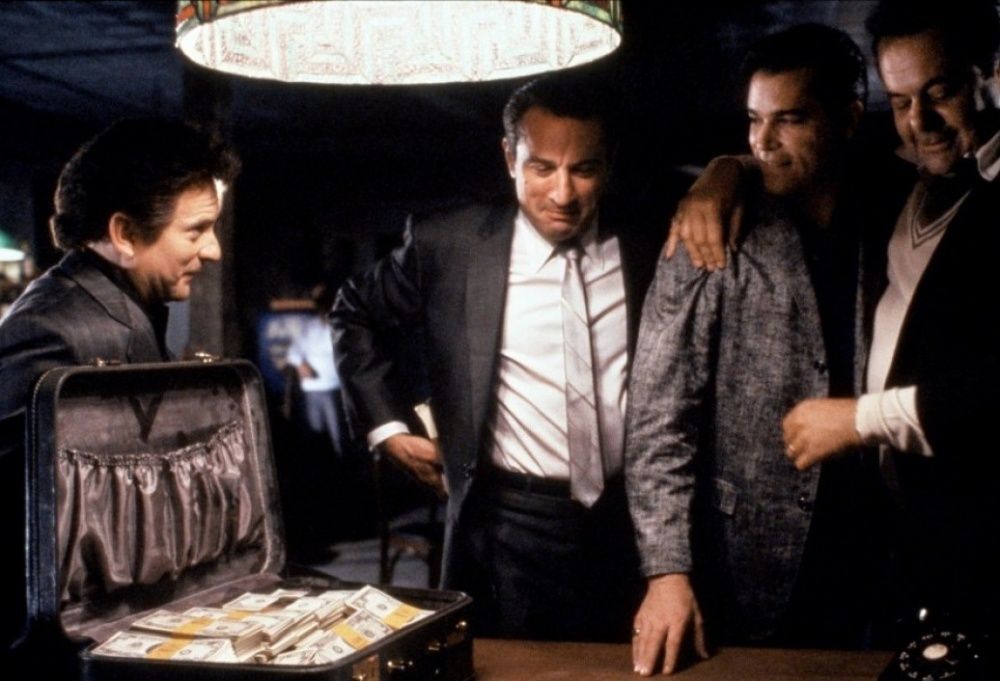
“Goodfellas” is the adaptation of the novel by Nicholas Pileggi “Wiseguy”, first published in 1986. As in the book, the film is a memoir of a man named Henry Hill (Ray Liotta), chronicling his life as a young boy when he starts working for a local mob leader and his later years as a hotshot with the mafia.
At the same time, as he climbs the underworld ladder, the nature of Henry’s relationships with the people surrounding him are also put under focus, with his wife (Lorraine Bracco) and his closest partners Tommy DeVito (Joe Pesci) and Jimmy Conway (Robert De Niro).
When talking about films on organized crime, “Goodfellas” is a classic, for various reasons, including its performances, its setting and plot, its soundtrack, and its cinematography, as well as for its directing and editing style (freeze frames; tracking shots – ‘The Copacabana shot’).
In a similar way, “Casino” has also become a classic. Directed by Scorsese five years after “Goodfellas”, the film is once more based on a Nicholas Pileggi book titled “Casino: Love and Honor in Las Vegas”. And it is precisely in this city that the action takes place, exploring the relationship of the criminal underworld with the nation’s gambling capital.
The film is centred on the relationship between two friends, Ace Rothstein (Robert De Niro), a mafia associate who is in charge of a casino, where he sees that all the profits are laundered before appearing in tax agencies’ reports; and Nicky Santoro, a mafia enforcer whose mission is initially to protect Ace and his operations. However, everything starts falling apart once the old power of money, greed, and betrayal enter the game, changing the relationship between the two friends.
Despite the great and intricate plot, as well as the film’s pace and performances, what is great about this film is the scenery that serves not only as the background of the action but also as the film’s subject – the corrupted world of Las Vegas, where a simple mechanism, a scheme of money laundering, is first created and starts being profitable, from then on growing and being incorporated in other activities until things get too big for anyone to handle, too big to stop, no matter at what cost.
Honourable mentions (Because this list can’t be endless):
Dick Tracy (1990); A Rage in Harlem (1991); Bugsy (1991); New Jack City (1991); South Central (1992); El Mariachi (1992); Menace II Society (1993); Fresh (1994); Killing Joe (1994); Desperado (1995); Clockers (1995); Dead Presidents (1995); Bound (1996); Sleepers (1996); Grosse Pointe Blank (1997); Jackie Brown (1997); Hoodlum (1997); Suicide Kings (1997); Analyze This (1999); The Limey (1999); The Boondock Saints (1999).